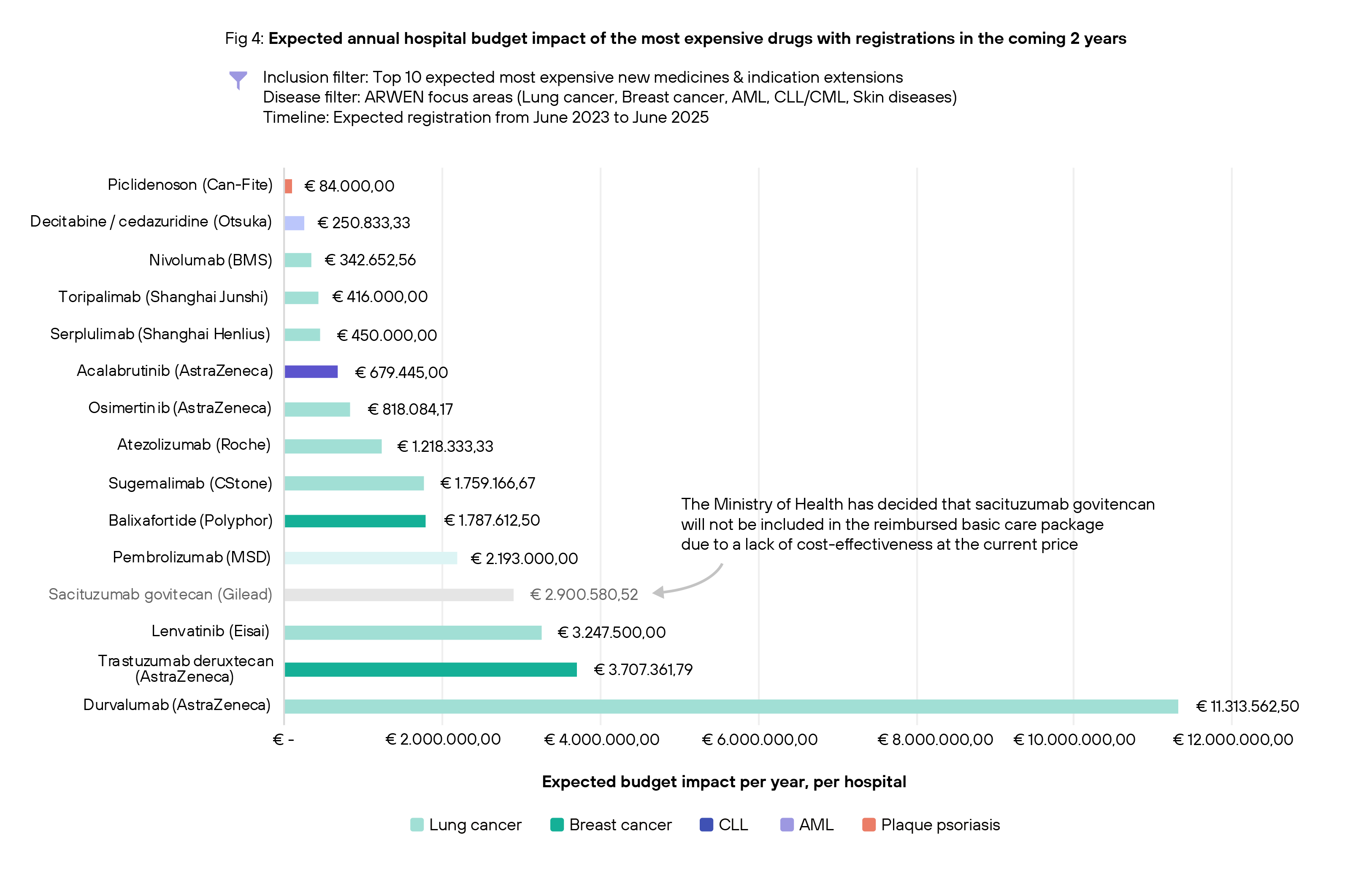Report: ‘On the Horizon’
Actionable insights into innovative medicines and their costs
June 2023 edition
The purpose of the ‘On the Horizon’ report
The National Health Care Institute (NHCI) issued the 12th edition of the Horizonscan medicines database on June 6, 2023. Since 2018, the Horizonscan has been providing an accessible and comprehensive overview of medications projected to become available in the Dutch market within the next two years. This database encompasses various types of medications, including novel proprietary drugs, extensions of indications for existing drugs, generics, and biosimilars. Detailed information regarding their mechanism of action, anticipated patient volume, treatment efficacy, registration dates, and financial impact is included.
Such data is instrumental in initiating processes related to the inclusion of medications in basic healthcare packages or engaging in pre-registration compensation negotiations. Furthermore, the Horizonscan serves as an early-stage source of information for patients, healthcare professionals, hospitals, health insurers, and government entities, enabling them to stay abreast of advancements in the realm of innovative medications. Given the constantly evolving pharmaceutical industry landscape, staying informed about newly introduced medications can be challenging. The Horizonscan serves as a valuable tool for healthcare stakeholders, enabling them to navigate this dynamic environment with ease.
Actionable insights, better connected
The LOGEX Life Science team analysed the datasets of all Horizonscans of the past 3 years (7 editions) and shared their actionable insights in the On the Horizon report, which can be downloaded on this page. It covers topics such as the number of new medicines per disease domain, the annual per-hospital budget impact of the most expensive upcoming medicines, and the mapping of pharmaceutical interest in specific disease areas and types of medicines like orphan drugs.

In the dynamic pharmaceutical world, staying abreast of new medications is challenging. The On the Horizon report is a valuable guide for healthcare stakeholders. The latest edition highlights the growing number of orphan drugs, offering hope for rare diseases. Yet, concerns arise about affordability and accessibility, making it a prominent political issue.
Jan van der Eijk, Principle of Life Science
Key insights
- For the next two years, most new medicines are expected in the fields of oncology, hematology and neurology
- Eye disorders like AMD and DME, as well as certain infectious diseases, are rapidly gaining interest from the pharmaceutical industry over the last years
- Orphan drugs are on the rise; over the last year, a 17% increase in the number of orphan drugs has been observed, most of which are in the neurology domain
- Lung cancer medicines will have the biggest impact on hospital budgets due to both high-cost drugs being administered already and new expensive treatments coming up
- Over the last years, the rate of growth for new medicines was highest in the field of infectious diseases
- By deciding not to include sacituzumab govitecan, a breast cancer medicine manufactured by Gilead, in the reimbursed basic care package, the Ministry of Health, Welfare and Sport has effectively saved an estimated per-hospital budget impact of €2.9 million (see figure).
Expected annual hospital budget impact of the most expensive drugs with registrations in the coming 2 years

The On the Horizon report brings attention to the case of sacituzumab govitecan, a breast cancer medicine known as TRODELVY, which is ranked as the fourth most expensive medication featured in the latest Horizonscan. Recently, the Netherlands denied its inclusion in the reimbursed basic care package due to insufficient evidence supporting its cost-effectiveness. The price demanded for TRODELVY was considered “disproportionate” in relation to the health benefits it offers. The individual hospital budget impact of the medicine was estimated at €2.9 million (see figure).
Healthcare expenditure is increasing at a rapid pace. To ensure solidarity within our reimbursement system both now and in the future, it is imperative to curtail drug prices and expenditure. Consequently, it is possible for a medication to offer health benefits, but those benefits may not align proportionately with the associated price, thereby compromising its effectiveness in delivering care. The recently concluded comprehensive care agreement (Integraal Zorgakkoord) underscores the necessity of making prudent decisions regarding the allocation of our collective financial resources.
‘On the Horizon’ report
Discover how Real-World Data can be used to monitor the impact of innovative medicines and how these insights can improve patient treatments.
On the Horizon report
Please fill in the form below to download the report.

